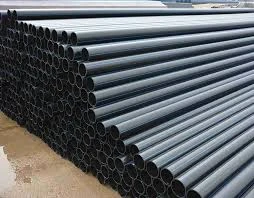Oct . 18, 2024 20:04 Back to list
Fittings for Waste Pipe Systems and Plumbing Applications
Understanding Waste Pipe Fittings Essential Components for Effective Plumbing
Waste pipe fittings are crucial components in any plumbing system, responsible for directing wastewater away from homes and businesses. These fittings play a pivotal role in maintaining hygiene, preventing leaks, and ensuring that sewage systems operate efficiently. In this article, we'll delve into the types of waste pipe fittings, their functions, installation considerations, and tips for maintenance.
Types of Waste Pipe Fittings
Waste pipe fittings come in various shapes and sizes, each designed to serve specific functions in a plumbing system. Some of the most common fittings include
1. Elbows These fittings allow for changes in direction within the piping system. Standard angles are 90 and 45 degrees, which help navigate corners and bend around obstacles.
2. Couplings Used to join two sections of pipe together, couplings ensure a tight seal to prevent leaks. They come in various materials like PVC, ABS, and metal, depending on the application.
3. Tees A tee fitting allows for a branch line to be created off the main pipe, facilitating connections to sinks, toilets, and other fixtures.
4. Wyes Similar to tees, wyes are used for branch connections but offer a smoother flow due to a gradual angle, which reduces turbulence.
5. Caps and Plugs These fittings are used to close the ends of pipes, preventing any wastewater leakage or blockage and maintaining system integrity.
6. Adapters Adapters are essential for connecting pipes of different sizes or materials. They ensure compatibility and facilitate easy transitions in the plumbing system.
Functions of Waste Pipe Fittings
The primary function of waste pipe fittings is to transport wastewater from various fixtures to the main sewer line or septic system. They help to regulate flow direction, connect disparate sections of pipework, and maintain pressure within the system. Furthermore, waste pipe fittings contribute to the overall efficiency of a plumbing system by minimizing friction and maximizing flow.
Proper waste pipe fitting design also plays a significant role in preventing clogs and backups. A well-planned plumbing system, complete with the right types and arrangements of fittings, facilitates smooth drainage and reduces the risk of costly repairs.
Installation Considerations
waste pipe fittings

When installing waste pipe fittings, several factors should be taken into account
1. Material Compatibility Ensure that fittings are made from materials compatible with the pipes they connect. Common materials include PVC, ABS, and metal, with each having specific advantages in terms of durability and resistance to chemicals.
2. Proper Slope Waste pipes should be installed with a slight downward slope to facilitate gravity drainage. A typical slope is around 1/4 inch per foot of piping to ensure efficient flow.
3. Ventilation Adequate ventilation must be provided to prevent vacuum formation, which can disrupt flow and lead to issues like siphoning. Vent pipes should be included in the design to allow air into the system.
4. Sealing and Joining Use appropriate adhesives, sealants, or mechanical fittings when joining pipes to ensure a leak-proof connection. Follow the manufacturer’s guidelines for the best practices.
Maintenance Tips
Maintaining waste pipe fittings is essential for prolonging their lifespan and ensuring efficient operation. Here are some maintenance tips
1. Regular Inspections Periodically check for cracks, leaks, or signs of corrosion in the fittings. Early detection can prevent more severe issues down the line.
2. Prevent Clogs Be mindful of what goes down drains. Avoid flushing non-biodegradable items and grease, which can lead to clogs and damage the plumbing system.
3. Clean the System Use enzymatic drain cleaners or regular hot water flushes to break down buildup in the pipes and fittings. Avoid harsh chemicals that can degrade plastic fittings over time.
4. Professional Help If you encounter persistent problems, don’t hesitate to call a professional plumber. They have the expertise to diagnose and resolve more complex plumbing issues effectively.
Conclusion
Waste pipe fittings are often overlooked but are vital for the smooth operation of plumbing systems. By understanding the different types of fittings, their functions, and proper installation and maintenance practices, homeowners and professionals alike can ensure that wastewater is efficiently directed away from their properties. Prioritizing the quality and integrity of these fittings will ultimately lead to a safer, more functional plumbing system and peace of mind.
-
High Quality PVC Soft Sheet for Flexible and Durable Applications
NewsJul.29,2025
-
High-Quality PPR Pipe for Plumbing Systems - Durable & Leak-Proof
NewsJul.29,2025
-
High Quality PVC Round Rod for Industrial & DIY Applications
NewsJul.28,2025
-
High Quality PVC Pipe Fitting - Durable & Leak-Proof Solutions
NewsJul.28,2025
-
High-Quality PVC Rigid Sheet (Glossy Surface) for Industrial Use
NewsJul.26,2025
-
High Quality PVC Rigid Sheet (Embossed Surface) for Industrial Use
NewsJul.25,2025

